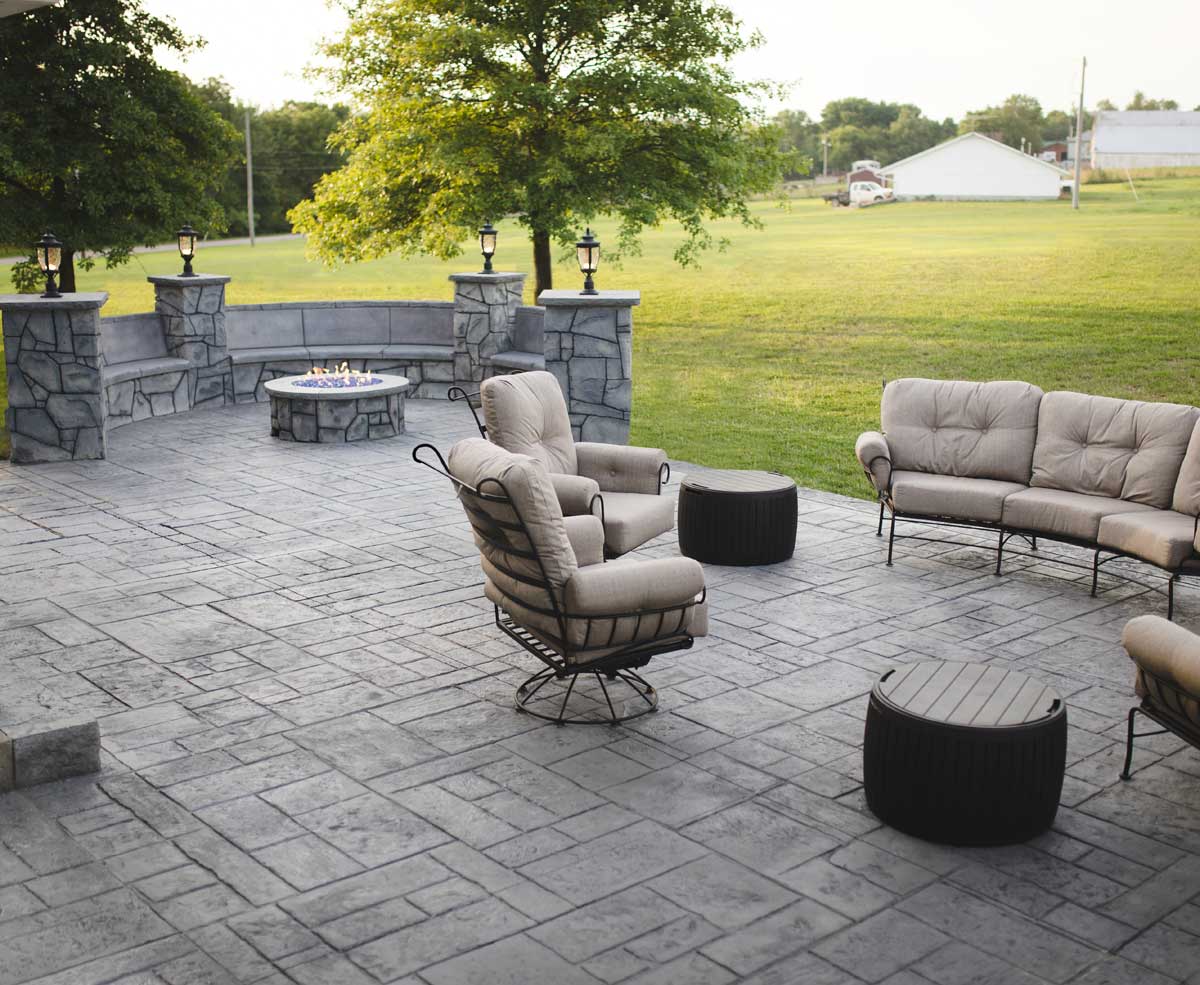Designing for Grey Stamped Concrete
Grey stamped concrete is underappreciated. With all the colors possible, sometimes grey is the most versatile. When deciding how to color and stamp concrete, never underestimate the beauty of simplicity. It may not sound like it at first, but grey stamped concrete could end up being the best stamped concrete coloring for your project.

Why make gray stamped concrete?
The simple answer is, grey stamped concrete more closely mimics natural or traditional materials. When you stamp concrete, the goal is usually to replicate natural paving materials. The most popular Brickform stamps, for example, are stone and slate patterns. In nature, these are often times gray, so it only makes sense to use gray colors when you stamp concrete. Gray is also a neutral color, so it goes well with most anything else. Since the lifespan of stamped concrete is usually several decades, you do not want to get locked into a color that won’t look good years from now.

How to color grey stamped concrete
Coloring concrete is not as simple as the average person would expect. Great care needs to be taken to make sure the proper concrete mix, coloring products, and installation techniques are used. That is why it is important to hire a trained experienced professional if you want to color or stamp concrete. There are two ways to color new concrete gray. Integral colors and Color Hardener are the two preferred methods. Integral colors are pigments that get mixed into the concrete before it is poured. This creates consistent color throughout the concrete but it is somewhat limited in the shades it can create. Color Hardener is a cement-based product finished into the surface of wet concrete. It is more labor intensive, but it can create more vibrant colors. Both are excellent options for creating uniformly grey concrete.
You should not, however, leave the concrete uncolored. It’s reasonable to think leaving the concrete uncolored is the easy way to get a gray finish. But, if you look carefully, you will see uncolored concrete isn’t always gray. Depending on the region and materials used, concrete often has a slight hue . This is a result of the natural green-gray or blue color of portland cement plus the various color of sand, large aggregate, and additives. By using a gray pigment, the concrete is given a more consistent and controllable color.

When to use grey stamped concrete?
Gray stamped concrete is suitable for almost any stamped concrete project. No matter what pattern you choose to stamp concrete with, gray can be used. Even stamped concrete wood plank textures can be gray. Most people would assume that color is only suitable for stone patterns, but modern design trends have made it suitable for any pattern. You can use gray stamped concrete on pool decks, patios, sidewalks, driveways, and anywhere else you would use textured concrete.
Design grey stamped concrete
All of the same rules apply when you are using gray as your base color. Look at as many stamp concrete pictures as you can find. This will help you figure out what you like. Pick textures and colors that work with their surroundings. Gray is attractive because it is a neutral color that works in most circumstances. For best results, use release that is darker than the base color. In most projects, this will mean using a light or medium gray base with a medium or dark gray release. Black and dark brown releases can also be used but are less common. By using a darker release, highlights are created that emphasize the texture and make a more natural and realistic appearance. Some may not want any highlight when they stamp concrete, so clear liquid release is best.
When combining colors, it’s a good idea to use neutral colors with other neutral colors. For example, a light gray stamp pattern might do well with a dark gray border. However, you can also use other hues to create a pop of color. For example, a red section of brick pattern concrete might stand out nicely against a gray slate pattern. Stains are another good option for adding more color and variation. Gray, black, and dark brown stains can be used to highlight gray stamped concrete. Water-based stains are most likely the best option because they are easiest to apply and can be mixed or diluted for unique effects. As with any decorative concrete, make sure to protect and enhance the finished surface with the appropriate decorative concrete sealer. This helps maintain the appearance of the concrete and extend its lifespan.
See More

